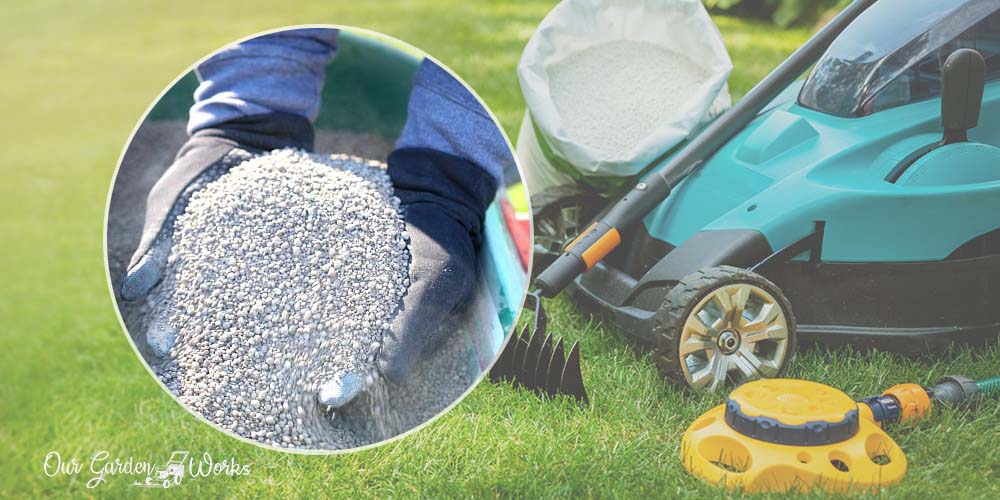As the saying goes, the grass is greener on the other side. In a gardener’s eyes, they’re probably using lime! Kidding aside, novice gardeners often ask: what does lime do for grass? Is it a magic trick or a valuable tool for lawn maintenance?
Well, one thing’s for sure it improves the technical side of lawn maintenance – soil structure!
Old folks and professional gardeners use lime as an efficient material to lower the soil pH level in lawns. Grass needs a specific range of soil pH so the roots can extract nutrients and moisture from the soil.
When the soil structure changes it causes nutrient deficiencies in the grass. It is often driven by the following factors that affect the soil pH level and make it either too acidic or alkaline:
- Acid rain and leaching.
- Lawn fertilizers.
- Lawn pesticides.
- Wet climates.
In this post, discover what the natural chemicals found in lime are, how it affects grass at a molecular level, and the precautions you should take when handling lime.
Unlike fertilizers, it is not something that you can spread and leave on your lawn since it has possible health risks for you and your pets.
What Is Lime?
Lime is derived from ground limestone which is a type of sedimentary rock found in mountains and sea beds.
It is formed from the accumulation of calcium when minerals precipitate in water. It contains magnesium carbonate and calcium carbonate which lowers the soil’s acidity level and makes it more alkaline.
Lime comes in a rock, powder, and pulverized form to serve different purposes. Aside from serving as agricultural lime, it is also used as:
- Aggregates to strengthen the foundation for roads.
- White pigment in paint and toothpaste.
- Ornament in rock, moss, and water gardens.
You might like: The Unpopular Natural Gem: Using Tobacco Dust For Lawn Care
What Does Lime Do To Grass?
Grass, regardless of whether they’re a warm season or cold season, requires a soil pH level of 6.0 to 7.0 which falls under slightly acidic to neutral.
If your soil pH meter detects that your soil is below 6.0, that means it is too acidic and the grassroots are not absorbing any nutrients from the soil.
Lime replenishes calcium in the soil which balances the soil pH level and makes it more alkaline. Oftentimes, rain, and watering leach calcium from the soil and make it more acidic.
No wonder why some gardeners get frustrated about how their lawns fail to green up even if they’re watering and fertilizing them properly.
5 Signs It’s Time To Lime Your Lawn
Lawn soil doesn’t change drastically based on the weather. It takes two to three growing seasons before it loses the soil pH balance ideal for grass.
Unlike maintenance fertilizers, lime is used sparingly and should only be used when:
The Grass is turning yellow
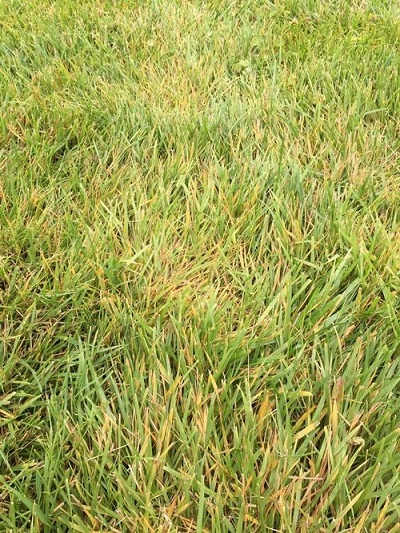
When the soil is too acidic, the roots will not be able to absorb soil nutrients. If left untreated, the grass will experience nutrient deficiency which will manifest as yellowing and wilting leaves. The blades of grass will also look lumpy and sick.
Lime the soil ten days after applying fertilizer to give the grass ample time to absorb the nutrients.
Moss and weeds are starting to grow.
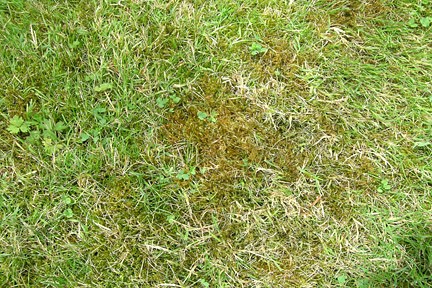
When the grass is weak, moss and weeds take over the lawn.
According to the University of Illinois, excessive shade, poorly draining soil, low soil pH, and compacted soil are all the qualities that favor moss growth. It’s a clear indication that some work must be done on the soil to restore its former green glory.
If you have no plans of growing a moss lawn in the future, your lawn will need a makeover and restoration through liming, soil aeration, and fertilization.
Lawn pests are everywhere
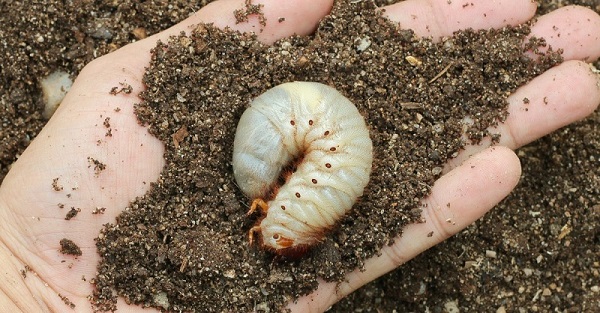
A healthy plant can resist pests naturally. However, when the grass is weak and nutrient deficient, it will become a magnet for hungry pests and fungal diseases.
If you notice visible damage on your grass, then it’s a sign that the pests are winning against your turf.
The best course of action is to initially control the pests using a granular insecticide. White grubs are the larvae of Japanese beetles that cause expensive damage to ornamental plants and grass since they feed on grassroots.
Once the population of grubs and other pests is managed, you can start restoring the soil structure by applying lime, compost, and manure to restore the health of the soil and let the grass thrive again.
Did You Know?
Lime is also used as an effective pesticide by growers in preparing infested soil. Lime is mixed with water to create a compound called hydrated lime or calcium hydroxide to repel overwintering pests in the soil like:
- Aphids
- Flea beetles
- Colorado potato beetles
- Squash bugs
- Cucumber bugs
- Other lawn-damaging insects
Hydrated lime is not used on plants because it will burn the foliage and roots due to its corrosive properties. It should be applied on bare soil.
Lawn fertilizers are no longer working
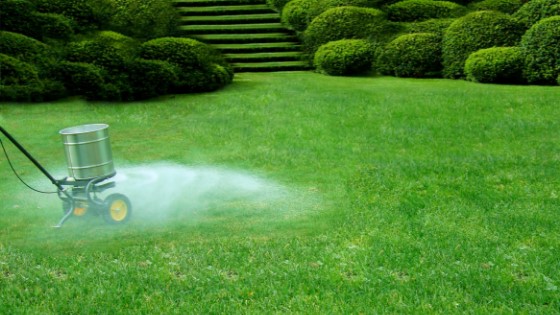
It’s easy to blame fertilizer when they fail to green up your lawn when in fact, the problem lies in the soil pH level.
Fertilizers may contain all the essential nutrients but if the roots fail to absorb nutrients from them, all your efforts will go to waste.
Check the soil pH level of the soil after applying lawn fertilizers. Then, add lime after a week or two to allow the nutrients to fully penetrate the soil.
As soon as the lime fully dissolves in the soil, the roots can start feeding and thrive.
The grass is experiencing drought stress
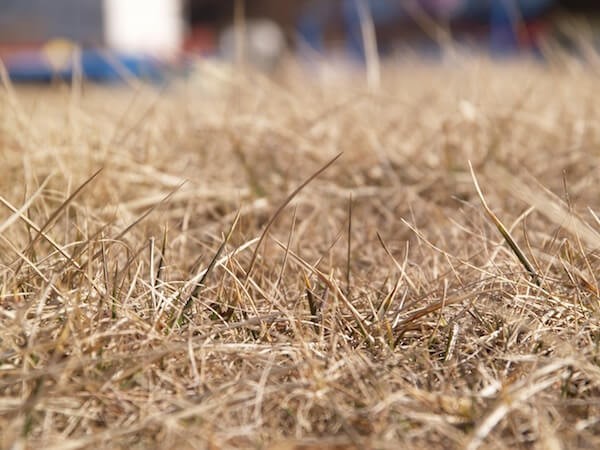
A dry and wilting lawn is surely an eyesore. During periods of a dry spell, grass deals with drought stress by supplementing energy to the essential parts of the plant and neglecting the leaves.
With added humidity and watering, they can start to rehydrate and develop new leaves but will require nourishment from the soil to fully recover.
Lime helps restore the optimal nutrient absorption of plants and helps them recover well from drought stress.
The grass may grow again without liming the lawn but you will certainly see the difference if you use it to balance the soil pH.
When Is The Best Time To Lime Your Lawn?
The soil takes a lot of time to absorb lime. So, the best time to lime your lawn should be in the fall. It gives the soil ample time to balance that soil pH and makes it favorable for the grass when they start to grow in spring.
You should also lime your lawn when the soil is not soggy and not rock-hard dry. It should be applied as soon as the soil becomes loose and damp one week after it rains. Delay liming your lawn if there’s an upcoming rainshower or typhoon to prevent the lime from leaching.
Some gardeners prefer to lime and fertilize at the same time. It may work for some but by doing so some people notice that the soil gets a lower amount of nitrogen from the fertilizers.
Is Lime Safe To Use On Your Lawn?
If you live with kids and pets at home, the first thing you’ll check about a lawn is its safety.
According to the University of Maine, lime is a natural sediment rock that is non-toxic to humans and pets.
However, agricultural lime is pulverized and the dust may irritate your skin, eyes, and lungs. Make sure to use goggles, long sleeves, and gloves when liming the lawn to prevent contact with the pulverized lime.
Some growers let the lime settle and dissolve in the soil after rain before they start working on the lawn, let the dogs run around, and allow the kids to play outdoors.
Once the lime dissolves, you no longer need to worry about any health risks on your lawn.
How To Apply Lime on a Lawn?
There are 3 instances where you can apply lime first, fertilizer before lime, and apply lime fertilizers together.
We will discuss the methods and share their respective benefits to the lawn below:
Method 1: Liming and Fertilizing The Lawn
Fertilizing and liming the soil saves gardeners a lot of time in tending the lawn. However, it is only possible if the soil is at a neutral acidity level which is between 6.5 to 7.
The soil is in good shape in nourishing the grass and the lime will slowly dissolve and maintain the ideal soil pH for the grass in the long run.
When the lawn maintains a neutral soil pH, you can lime the soil every 2 years for maintenance.
Over-application of lime can also kill your grass or cause yellowing leaves. So, make sure to use a soil pH meter before liming.
Method 2: Lime First
Gardeners and professionals often say that lime takes time. It’s best to apply lime first if the soil is too acidic with a pH level lower than 4 and during the soil preparation before seeding.
The main reason why you should lime first is it takes a lot of time for the lime to dissolve in the soil and reduce the soil acidification.
There are also several factors why lime takes so much time to increase the soil pH level. Three of which include:
- Lime particle size: Pulverized lime will dissolve faster in the soil than lime pellets.
- Soil-lime mix: Lime should be well integrated into the soil to ensure that it goes deep and does not sit on the surface.
- Amount of lime: There should be a balanced ratio between the amount of lime spread throughout the lawn and the space being treated.
The best time to lime a lawn before fertilizing is during the fall season when there is no threat of frost and extreme heat.
Then, wait for about 50 to 70 days before fertilizing the soil. In general, 12 lbs. of pulverized lime can treat a 1000 sq. ft lawn and increase the soil pH level by 0.5 in two to three months. Simply put, the sequence would be:
Lime > Fertilize > Overseed
Pro tip: It is most recommended to lime lawns before overseeding the lawn. It will ensure that the soil is on the right part of the soil pH meter before the grass grows back in spring.
Method 3: Fertilizer First
Lawn fertilization comes first when you are planting new seeds or a new variety of grass. The seeds need enough nutrients from the soil to germinate and grow even if the soil is acidic.
In 10 to 12 days after fertilizing the lawn, you may start spreading lime to enhance the nourishing effect of lawn fertilizers. In simple terms the sequence would be:
Fertilize > Plant new seeds > Lime
Safety Tips: Do’s and Don’ts When Liming a Lawn
Lime is generally safe to use around kids and pets but since it comes in a dust form it may cause some side effects. Practice the following tips to ensure safe and smooth lime application on your lawn:
- Wear pants, a long-sleeved shirt, safety glasses, and gloves when handling lime.
- Make sure that no pet or kid stands close to the lawn during application.
- Check the weather forecast for possible rain because liming and fertilizing the soil without any plants to absorb it will leach the material into the groundwater or waterways when it rains.
- Water the lime-treated lawn before working around the lawn.
- Apply lime 3 to 4 feet away from bodies of water.
- Pour or transfer lime and fertilizer on the pavement to easily sweep up any excess on the floor. It is harder to clean up spilled lime or fertilizer in the soil.
- Always use a soil pH meter before liming the soil.
Frequently Asked Questions
Can you put too much lime on your lawn?
No, too much lime will make the soil alkaline and cause chlorosis.
Chlorosis is a condition where the leaves will lose their chlorophyll or the green pigment and become yellow or pale green. At the same time, the roots will also fail to receive nutrients from the soil.
How much lime should I put on my lawn?
In general, 12 lbs. of lime can increase the soil pH level by 0.5 for a 1,000 sq. ft. lawn. You may use up to 50 lbs. of lime depending on the level of pre-existing acidity of the soil.
Does lime kill moss in lawns?
Liming the lawn and increasing the soil pH can prevent moss growth but it will not kill them right away.
You should also remove other factors that make moss thrive like shade and excess moisture. If moss is overwhelmingly abundant in your region, you may want to consider growing a moss lawn which is more cost-efficient and easier to maintain.
What is the lime used for in lawns?
The lime used for agricultural use and lawn maintenance is dolomite lime. It also serves as a fertilizer and insecticide when mixed with other compounds. At the same time, it is rich in calcium and magnesium but not an ideal alternative to lawn fertilizer.
Does lime for lawns come in liquid form?
Yes, but it is also available in pulverized form. Nature’s lawn and Garden Liquid Lime is in liquid form while Jobe’s Organics Garden Lime comes in pulverized form.
Should you put lime down before or after a rain?
Lime your lawn a few days after it rains. Unlike other soil amendments, lime takes time to dissolve in the soil, and applying it before it rains will leach it into the groundwater and waterways.
Can you put lime on a wet lawn?
No, you should apply lime in dry soil. Lime applied in wet soil will not dissolve well and will just leach away from the surface of the soil.
What time of year should you apply lime?
Usually, the best time to apply lime for warm season grass is June while cold season grass will benefit most if lime is applied in September. However, the ideal timeline also depends on the climate in your region.
How often should lime be applied to the lawn?
A well-maintained lawn with a neutral soil pH level will only need lime every 2 years.
However, if you live in rainy regions, the soil may become acidic faster, and may need to lime your lawns more often.
Final Thoughts
Liming lawns is the not-so-secret technique of homeowners and professionals to a green and lush lawn.
Now that you know how it works, you can now set the standard in your neighborhood and let your neighbors wonder what you’re using on your lawn. So, when they ask, what does lime do for grass, you’ll be speaking from experience.
Let us know in the comments the transformation of your lawn after using lime. We’re excited to read about your experience and struggles along the way!
Also, don’t forget to share this post with your friends who are frustrated about how to green up their lawns.
